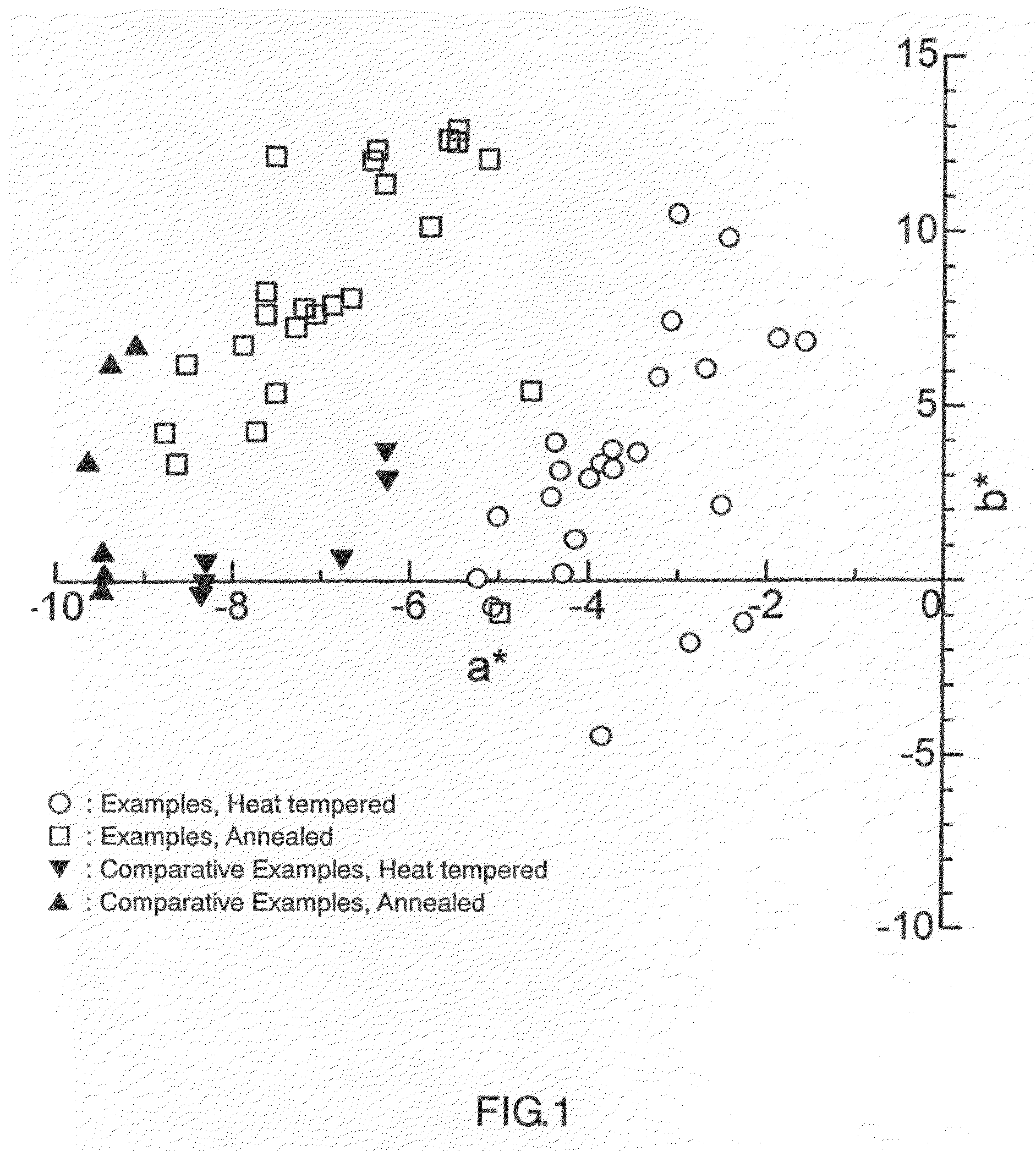Glass Article and Method of Producing the Same
a technology of glass articles and glass pieces, applied in glass tempering apparatus, manufacturing tools, transportation and packaging, etc., can solve the problems of high ultraviolet transmittance, easy vaporization of selenium, and serious so as to reduce the impact on the environment, reduce the visible light transmittance, and the effect of grayish color ton
- Summary
- Abstract
- Description
- Claims
- Application Information
AI Technical Summary
Benefits of technology
Problems solved by technology
Method used
Image
Examples
examples
[0068]Hereinafter, the glass article of the present invention will be described further in detail referring to the following tables.
examples 1 through 25
Production of Glass Sheets
[0069]A glass sheet was produced according to the following procedure. As raw materials for base glass components, silica sand, dolomite, limestone, soda ash, salt cake, and potassium carbonate were used. As raw materials for colorants, ferric oxide, titanium oxide, cerium oxide, cobalt oxide, metallic selenium, nickel oxide, and a carbonaceous reducing agent were used. The above raw materials were mixed together in predetermined percentages (see Tables 1 and 2), and thus raw glass batches (hereinafter referred to as “batches”) were prepared.
[0070]The batches thus prepared were melted and refined in a platinum crucible. First, each batch was melted and refined, with the crucible being kept in an electric furnace at 1450° C. for 4 hours. Next, the glass melt was poured onto a steel plate outside the furnace so as to be about 6 mm thick, and then cooled to be solidified. Thus a glass member was obtained. Subsequently, this glass member was subjected to anneal...
examples 41 through 65
Production of Annealed Glass Articles
[0079]Glass members were prepared according the same procedure as in Examples 1 through 25 and were processed in the same manner as in Examples 1 through 25, and thus glass sheets with their main surfaces being optically polished on both sides were prepared, having a 3.1-mm thickness and an approximately square shape with each side being about 5 cm long. Table 1 shows the base glass composition of the glass sheets thus prepared, and Table 4 shows the contents of colorants. These glass sheets were used as annealed glass articles (Examples 41 through 65) without modification.
TABLE 4(Annealed article)Example4142434445464748AnalyzedNiO0.1000.1500.1220.1220.1220.1220.1220.122compositionCoO0.03000.01000.01600.01590.01590.01590.01590.0164Mass %Se00000000CeO22.000.1000.4500.4970.4970.6960.8950.696TiO20.6000.8000.0260.0260.0260.0260.0260.026T-Fe2O30.6000.9000.9800.9520.9520.9530.9530.953FeO ratio (%)36.720.018.220.123.325.724.722.3(Annealed article)Exampl...
PUM
| Property | Measurement | Unit |
|---|---|---|
| thickness | aaaaa | aaaaa |
| visible light transmittance | aaaaa | aaaaa |
| thickness | aaaaa | aaaaa |
Abstract
Description
Claims
Application Information
 Login to View More
Login to View More - R&D
- Intellectual Property
- Life Sciences
- Materials
- Tech Scout
- Unparalleled Data Quality
- Higher Quality Content
- 60% Fewer Hallucinations
Browse by: Latest US Patents, China's latest patents, Technical Efficacy Thesaurus, Application Domain, Technology Topic, Popular Technical Reports.
© 2025 PatSnap. All rights reserved.Legal|Privacy policy|Modern Slavery Act Transparency Statement|Sitemap|About US| Contact US: help@patsnap.com


